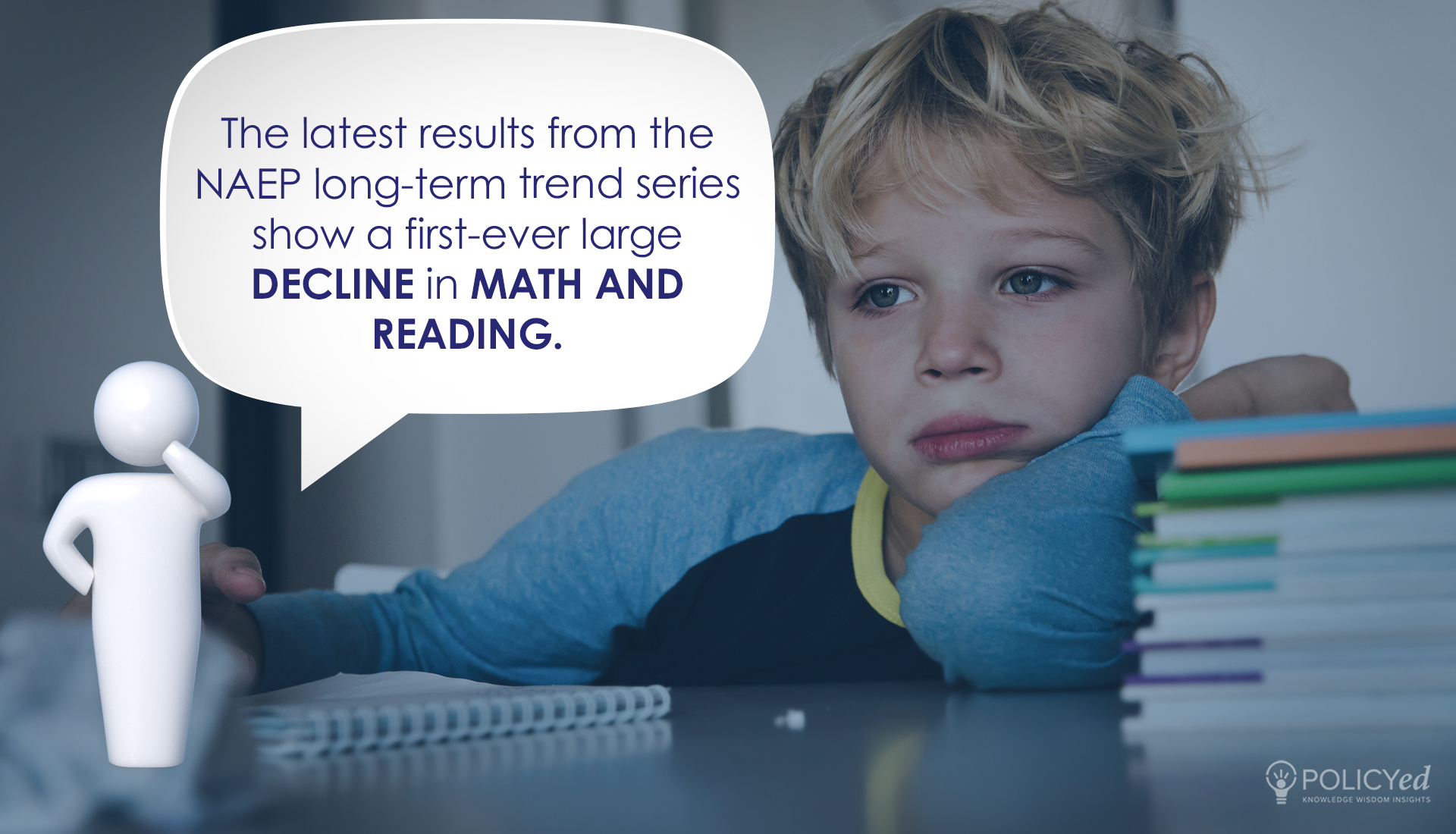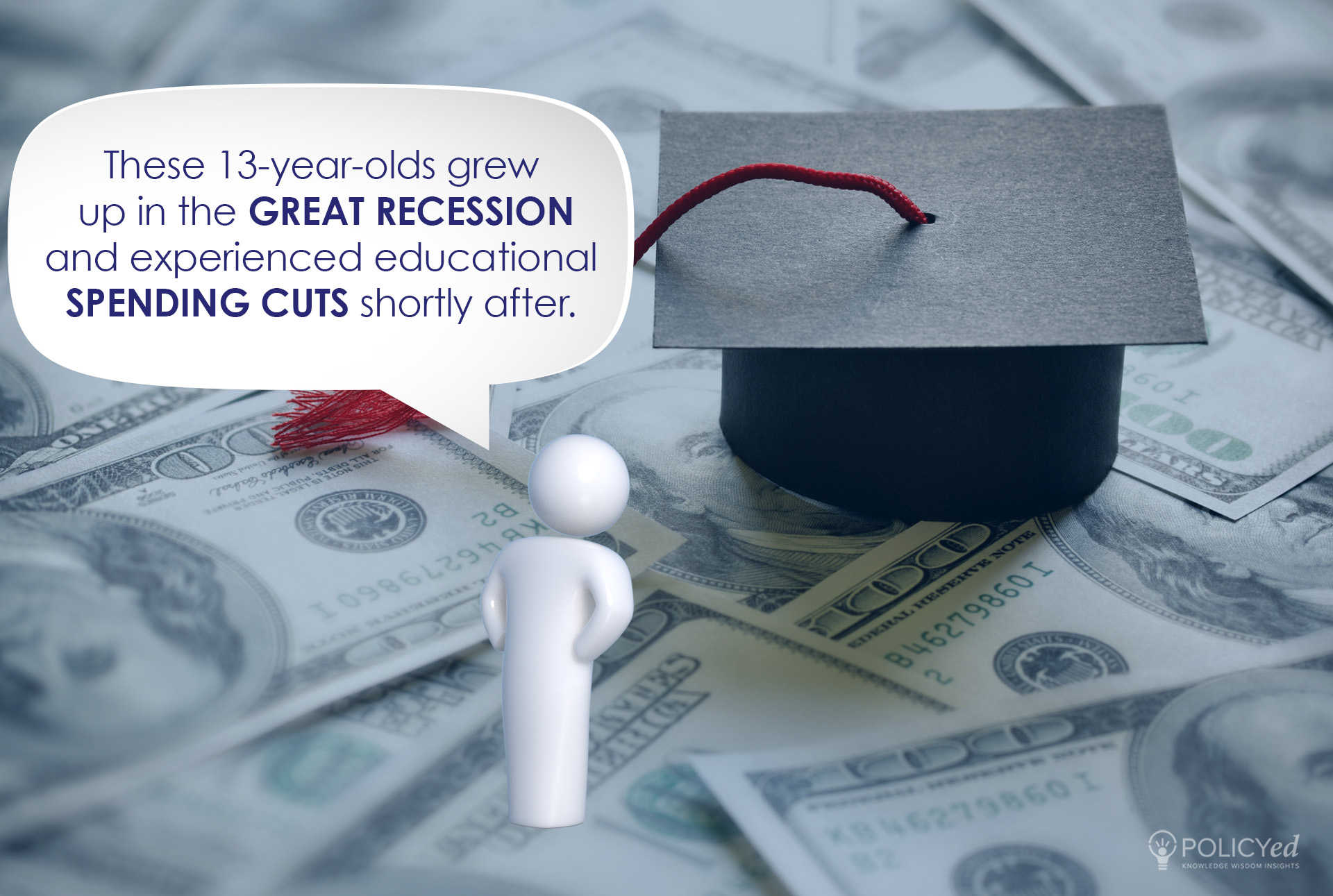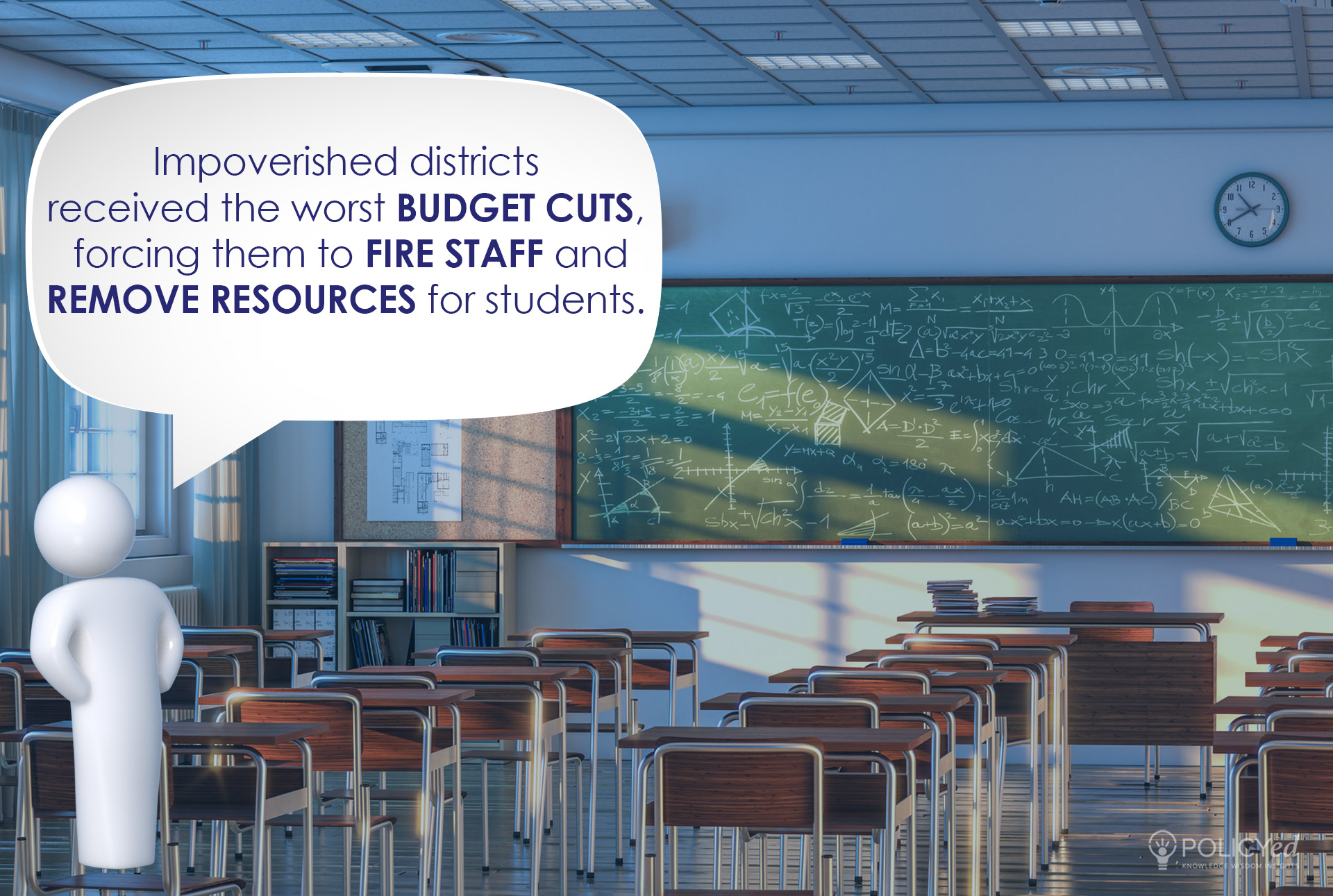Facts At Your Fingertips
Historic Education Decline
The results from the 2020 National Assessment of Educational Progress (NAEP) long-term trend series are in, revealing a concerning state. Just before the pandemic kicked in, 13-year-olds in America saw large declines in both math and reading—a first in the study’s nearly 50-year history. Black, Hispanic, and low-achieving students saw the largest declines.
Historic Precedent
The 13-year-olds who took the long-term trend exam in January 2020 would have been babies when the economy began experiencing catastrophe in 2007. Although temporary relief funds were made available after this crash, once those funds were spent, school districts went over a financial cliff and suffered deep spending cuts—just as this cohort of kids entered kindergarten, around 2011 to 2013. It was the first time in recorded history that real per-pupil spending declined nationally.
Widespread Cuts
High-poverty districts received the worst budget cuts, and those districts rarely made cuts strategically. Instead, they laid off the most junior teachers (regardless of their effectiveness), raised class sizes across the board, eliminated reading coaches, and got rid of tutoring programs. These cuts happened just as this cohort was making its way through kindergarten and first and second grades—arguably the most important period for developing literacy and numeracy skills.
Why it Matters
We are entering a very challenging period, given the COVID-19 crisis and its consequences for student achievement. We should expect that test scores will be depressed through at least the early 2030s. A decade ago, we failed our students in the wake of the Great Recession. Let us not repeat the same mistakes again.




